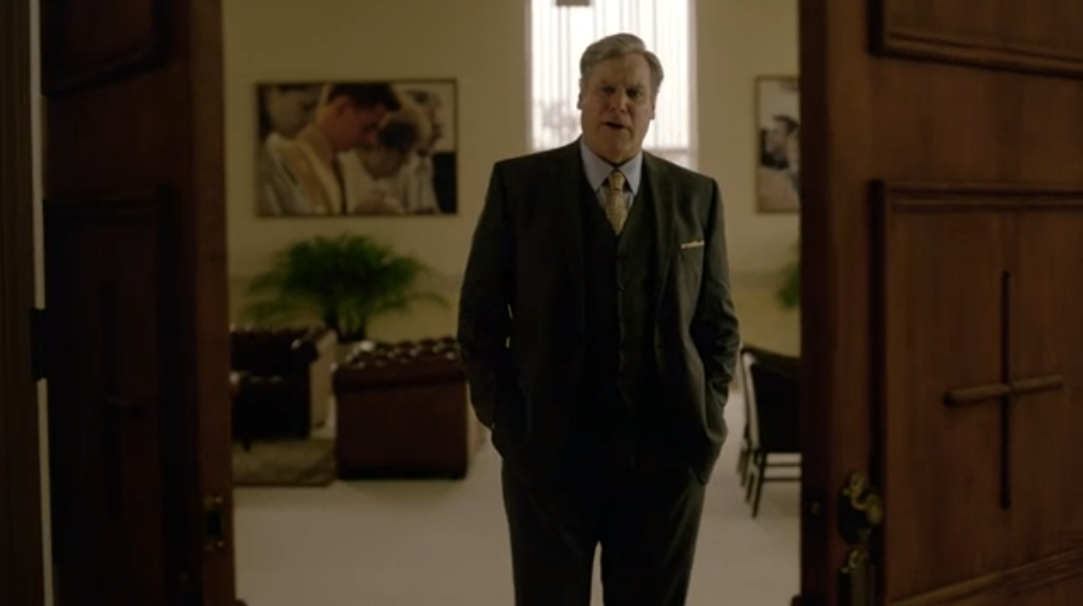Now that True Detective’s first season has concluded with a controversially straightforward finale, superfans are left to wonder whether creator Nic Pizzolatto intentionally littered the show’s manhunt with seemingly endless Easter eggs, red herrings, and self-referential clues, or whether the show’s vast conspiracy was all in our minds, man. I talked with costume designer Jenny Eagan about the black stars, yellow ties, and creepy flowers that popped up on key characters throughout the show, and what they all really meant. (Spoiler alert: Absolutely nothing.)
Slate: From the beginning, Internet sleuths were picking apart characters’ costumes for clues to the show’s central mystery. Were they intentional? Or were we all reading too much into them?
Jenny Eagan: I think you were reading too much into them! We just tried to do the characters well. There were so many amazing actors in True Detective, and our main goal was to give them a palette and the tools to make the characters themselves. People were always looking for clues. But a lot of times, the costumes just ended up being ironic coincidences. We didn’t want to do anything to take viewers in the wrong direction. It would have been too much.
Slate: Were you surprised at the intense speculation about all of the costumes?
Eagan: Absolutely! I came upon one person who had created a display of all the ties worn in the first six episodes, speculating about what they meant. I was thinking back through the costumes, like, “Oh, God—did that person even have a tie?” I chose Marty and Rust’s ties very specifically, but not to try to give away any clues. We had charts and charts of Marty and Matthew’s costume changes, rotating their sport coats and their ties in such a way that a man would. It was extremely challenging and a lot of fun.
Slate: Let’s talk about Rust’s achingly well-fitting detective attire. All of the other detectives wore schlubby suits and shirts, but not Cohle—at least, not in the ’90s timeline.
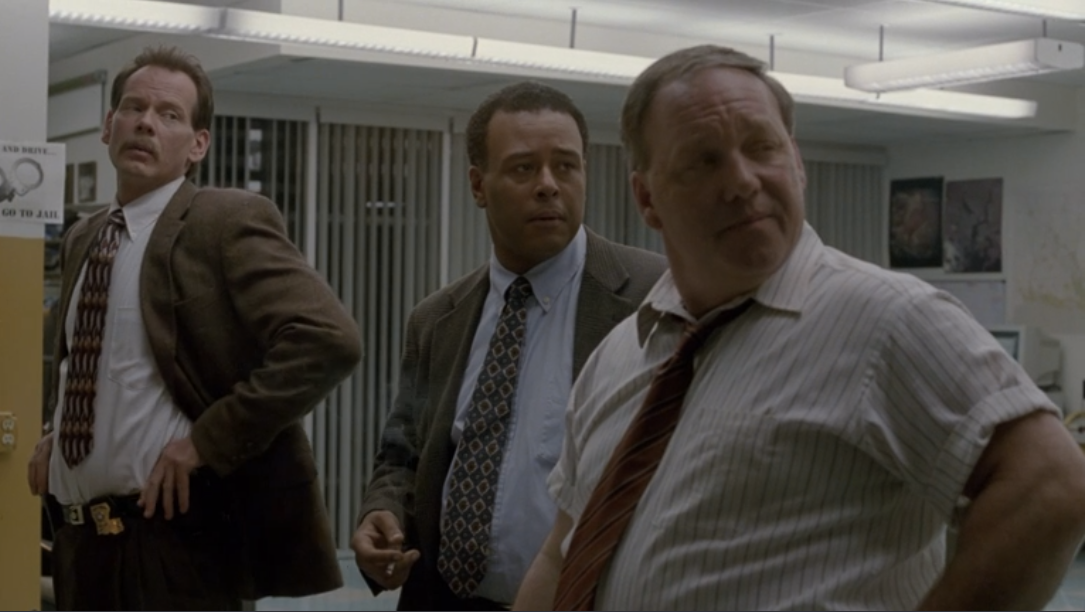
Note the form-fitting office-wear of Rust Cohle, top, and how it contrasts with what his schlubby colleagues wear.
HBO
Eagan: Cohle was such a complex character, and yet I knew he’d be so simple in the way that he dressed. It was all about utilitarianism for him. That’s what made him comfortable. We certainly didn’t want to dress him toward a particular fashion. In the mid-’90s, men were wearing pleated pants. Suits were boxy and squared out. That was nothing that Rust was going to be interested in. He was going to want to go to one store and pick up one of each item of clothing and wear them all indefinitely. But just to be frank? It’s Matthew McConaughey. He’s sexy. There was going to have to be some sex appeal there.
Slate: What’s the story behind Marty’s Pink Floyd T-shirt?
Eagan: After Cohle executed his raid into the biker bar, we wanted to put something on Marty that would give him a little bit of an edge, to make him try to seem useful. We decided to go with something from a rock band, someone who would have been popular when he was in college. We knew that people would recognize the Pink Floyd album. But it was in no way meant to tie into the story itself.
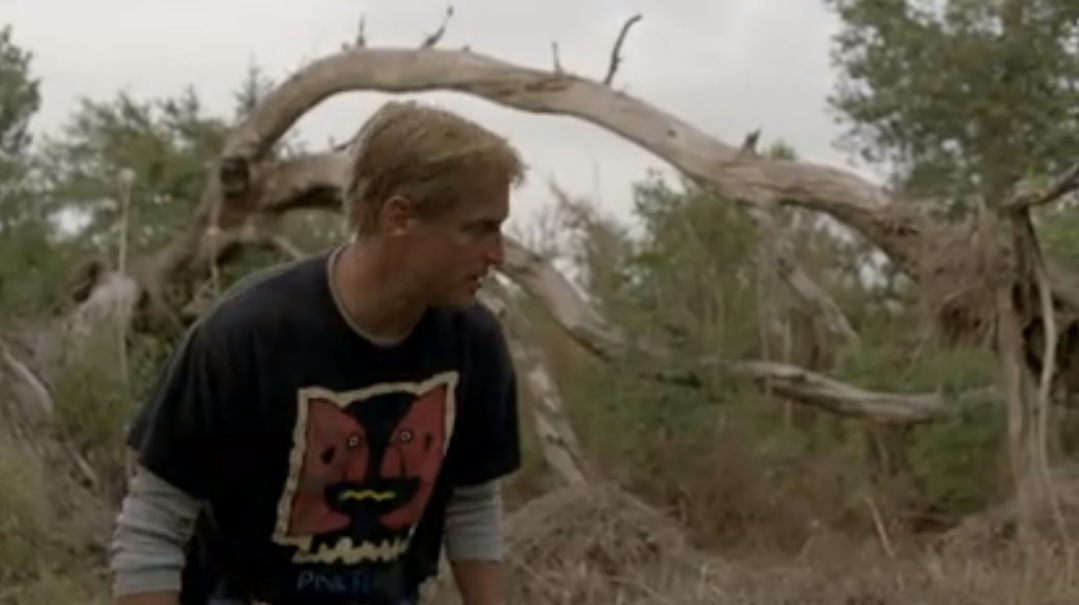
Marty wants to dress the part, but he is never cool.
HBO
Slate: Was it supposed to make Marty seem, like, super lame?
Eagan: I think that’s the thing about Marty. That’s how I perceive him, anyway. There was something a little bit lame about how he was carrying on with these younger women, like he was never really comfortable with who he was. Cohle didn’t care about anything. So he came off as cool and, if you will, kind of sexy. When you first see Marty, he looks pretty confident and cocky, but in reality, he’s searching constantly for who he is. So of course he would think this T-shirt from college is cool when it’s actually pretty lame. You see that, too, in his explosively patterned ties. He’s trying so hard. They were like O.J.’s lawyers at the time, those ties they wore in ’95. It’s a peacocking of sorts. We get where he’s trying to go with it, but he just never gets it quite right.
Slate: What were your ’90s references? The clothes were really evocative of the decade, but they were never too obvious. It didn’t feel like watching an episode of Full House.
Eagan: I grew up in Missouri in the ’90s, so the show was kind of my ’90s. I brought all of my photographs down to New Orleans, all my yearbooks and stuff. You know the girl whose face is on the big billboard in Episode 1? She was one of my friends from high school. I knew that a place like Lafayette would be late compared to the rest of the country, fashion-wise. It wasn’t a town that was going to be up on all the current trends. So I backdated the clothes a bit, to the late ’80s. Older folks in the show, like people in the tent revival scene, were dressed in clothes from the late ’70s. These were people who didn’t have a lot of money, people who don’t buy new things every season because they can’t afford to. We also tried to make sure we didn’t costume anyone so obnoxiously that it overpowered the show. There was so much you had to pay attention to in every episode, we wanted to keep the wardrobe subtle.
Slate: And yet we couldn’t stop reading into every little thing. I’m afraid I have to put my True Detective conspiracy theory hat back on for a second. Throughout the series, we noticed female characters dressed in floral prints, from Maggie’s sex scene with Rust to nurse in the children’s hospital. Young Audrey’s sexual drawings also feature flowers, as does the gigantic mural in the hospital. And in the final episode, Errol’s, uh, companion refers to having sex as “making flowers.” Was there some sort of message hidden in the flora?
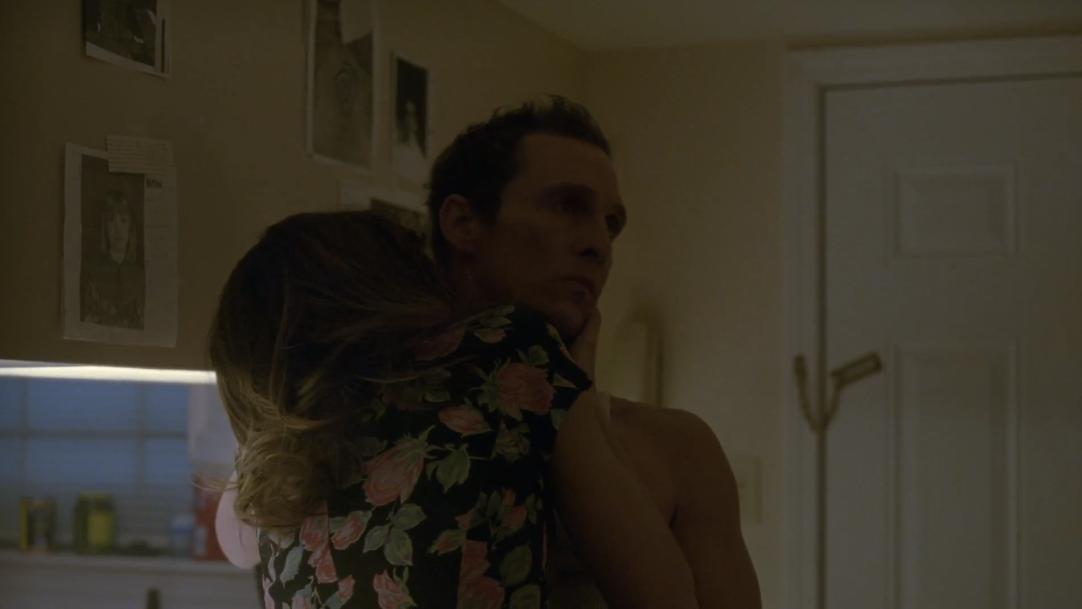
Note the floral pattern, one of many. Don’t read too much into it, though!
HBO
Eagan: No, not really. For [Errol’s half-sister], it was a specific choice. I layered two different nightgowns on her that were both floral, because it was creepy, and she was creepy. And I wanted to use something sweet and innocent to dress this poor, poor woman who had been so tortured in her life. But again, coming back to the other theories, it was less about leading the viewer and more about focusing on each character and doing what felt appropriate and right. In general, though, pattern mixing throughout the series was important. The effect was almost confusing. The more patterns we put on characters in the scenes, the more it leant itself to the unsettling atmosphere of the show.
Slate: What about the color yellow? That’s a visual clue that’s written all over the script.
Eagan: I don’t particularly like yellow, in general. But I did use it in a few places throughout the show—for instance, in Billy Lee Tuttle’s tie and pocket square—to denote wealth. There’s a bit of a peacock element to wearing yellow, like you’re showing off, trying to be something special bigger than you actually are. That’s why we used yellow there. There wasn’t really any more to it than that. The show itself was so cool and dark in its overall tone, we used cool and dark tones for the most part. Of course, there were some elements in the set design—in last night’s episode, you see the big creature wrapped in yellow fabric, the Yellow King—that were obviously intentional.
Slate: OK, but what about the woman that Rust and Marty encounter on the side of the road, the one with the black star neck tattoos? She also has stars knit into her hoodie! Surely that was not coincidental!
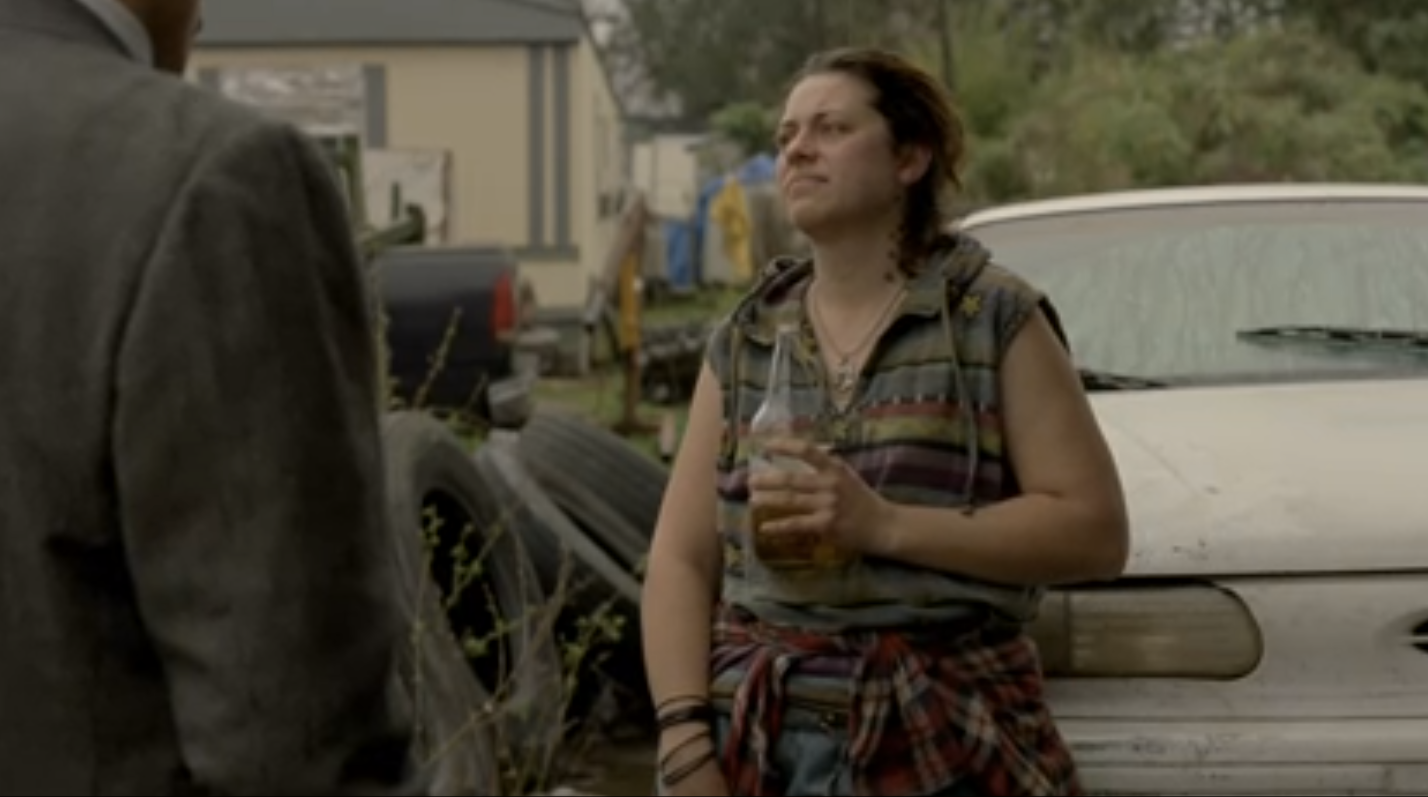
This woman has black stars on her neck and, coincidentally, stars on her hoodie, too.
HBO
Eagan: I saw that on the Internet, too! That was a vintage hoodie we got from Los Angeles, and then aged a bit … We had an ager that we put to work on just about everything. We took extras’ clothes and gave them all a big wash over with a cool tan, to give a feel of dinge too it, a layer of dirt. We wanted to make everything feel much more down and a little bit poor, for a lack of a better word. But as for the hoodie, we didn’t notice the connection until we saw her in costume with the stars on her neck. I looked at her like, “Holy shit!” It was all sort of ironic. When I saw that online, I was like, “Jesus, I didn’t know that, either.” It was as exciting for me as it was for everybody else.
Slate: Well, we’re probably never going to stop seeing things. My favorite Internet costume find was Reggie Ledoux’s My Little Pony towel.

If you are extremely well-versed in such things, you may notice that Reggie Ledoux is wearing a My Little Pony towel.
HBO
Eagan: I can’t believe someone noticed that. The script has Reggie getting out of the shower, caught at a moment when he’s not cooking. I wanted him to look as creepy as possible. I found a My Little Pony towel and thought, “How creepy is this?” Then I faded it so much that the color was down to almost nothing. I don’t know if anyone else on-set even knew what it was. The director might have known, but I don’t know if he would have cared. I’m shocked that anyone recognized it.
Slate: There’s certainly a big overlap between Reddit users who are obsessed with True Detective, and those who are aware of the Brony subculture. You know, the group of grown men who are obsessed with My Little Pony.
Eagan: I … was not aware that that was a thing.
